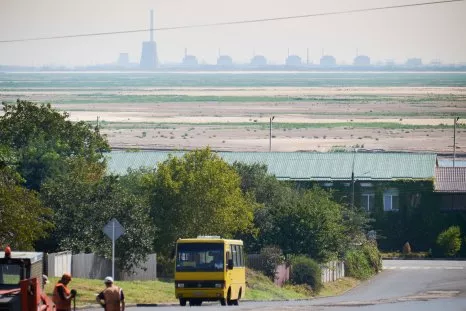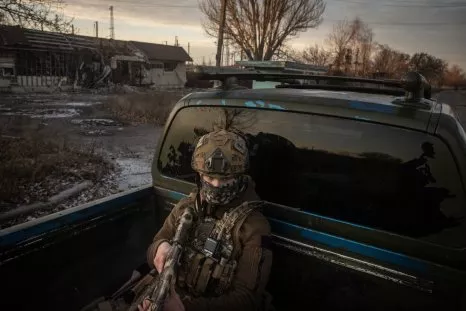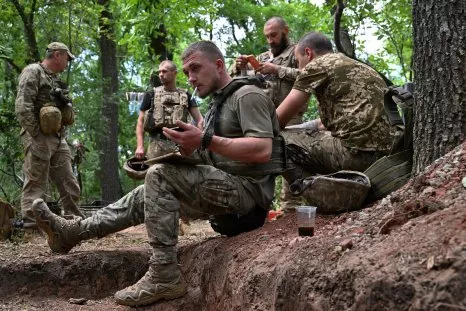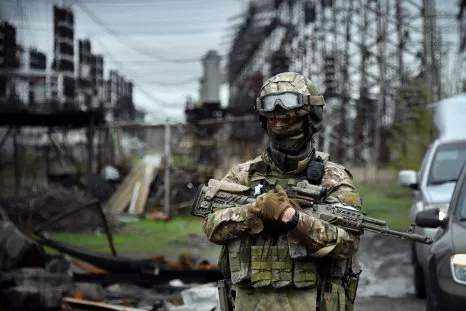Russia's Rising Artillery Losses in Ukraine Leave Forces 'Totally Depleted'
The story of Ukraine's summer 2023 counteroffensive has on the surface been one of frustration, heavy losses, and little territorial gain. From the start, Ukrainian political and military leaders had to juggle high expectations with the tactical realities that ultimately proved so difficult for Kyiv's forces to overcome.
Officials in Kyiv have sought to ease Western concern at a lack of progress while pointing to the broader successes of Ukrainian operations. All of western Russia—and Moscow—are now in range of Ukrainian drones. Part of the Black Sea Fleet has reportedly been forced out of Crimea. And the erosion of Russia's soldiers and military equipment has continued at a rapid pace.
Ukraine's apparent edge in the artillery war is a particular point of pride for Kyiv. The big guns have dominated the battlefields from the first moments of Russia's full-scale invasion. For all its supposed modernization, Moscow's military doctrine has retained the historical Russian focus on artillery.
Russian gunners proved more numerous and well-supplied than their Ukrainian enemies in the early stages of the conflict. But as Kyiv's arsenal has been bolstered by NATO systems, Russia's "god of war" has been somewhat muted.
Kyiv's claimed tally of Russian equipment losses demonstrates the enthusiasm with which Ukrainian artillery and drone teams have hunted Russian big guns, as well as multiple launch rocket systems (MLRS) that perform a similar function at shorter ranges.
From September to November 2023, Ukraine claimed to have destroyed 2,272 artillery pieces, and another 167 MLRS. In the same period in 2022, the figure was 789 artillery pieces and 108 MLRS. Newsweek cannot independently verify the figures and has contacted the Russian Defense Ministry to request comment.
"It's really a big problem for the Russians," Ivan Stupak—a former officer in the Security Service of Ukraine and now an adviser to the Ukrainian parliament's national security, defense and intelligence committee—told Newsweek of Kyiv's artillery campaign. "It's not just a cliché, it's not Ukrainian propaganda."
"For the last five months or so, Russia has very actively been using old-style artillery. Not late-Soviet era, but mid-50s and mid-60s—D30 and the D20-type of towed artillery, with a maximum range of around 9 to 11 miles," Stupak said.
"It's a very short distance; it's nothing compared with the Archer from Sweden," he said, referring to the system donated to Ukraine by Stockholm which has a range of more than 30 miles.
"Russian artillery stockpiles are totally depleted," Stupak said. "They are using this artillery because they have no other options."
President Vladimir Putin is shifting the Russian economy onto war footing, but ramping up replacement parts production for artillery is a complex task, and partially reliant on Western technology to which Moscow now has limited access. The pressure of worn-out barrels is a particularly big issue, Stupak said.
The Kremlin's problem is only becoming more pressing as advanced NATO munitions arrive in Ukraine. The summer-into-fall uptick in claimed destroyed Russian guns coincided with the arrival of cluster munitions, which spread hundreds of bomblets over a target area rather than relying on a single shell.
Now, HIMARS-fired cluster munition variants of the long-range MGM-140 Army Tactical Missile System—known as the ATACMS—are also in Ukrainian hands. Ukraine's gunners have been assisted by increasingly sophisticated counter-battery radars, used to quickly locate firing Russian guns.
Dan Rice, a former aide to Ukraine's commander-in-chief General Valerii Zaluzhnyi, was influential in Kyiv's push for cluster munitions, both the tube fired at ATACMS variants. Rice told Newsweek that the Ukrainians now have "fire superiority" over the Russians, as well as more advanced and effective weapons systems.
"The full-scale deployment of cluster artillery shells and rockets has entered a new phase in the war," Rice said, "which is why Putin is suggesting peace talks and calling it a 'tragedy.'" Now, he added, Moscow is grappling with "deep strikes against large troop concentrations and any Russian artillery or MLRS that fires."
Both Ukrainian and Russian forces are pushing hard on different parts of the front, looking to secure fresh gains as the fall rains arrive and the freezing winter season looms. Kyiv's hopes of a Russian collapse in the south of the country look to have been dashed, while Moscow's grinding efforts to gain new victories in the east are proceeding slowly and at high cost.
Both sides will need many more munitions to continue the fight, Stupak said. Kyiv, he noted, has "lots of problems with deploying artillery munition shells from European countries...we were promised about 1 million shells, but up to now we've got only about 300,000."
"In Russia, they've got a million shells from North Korea, from Iran, and they're trying to rebuy from different countries they previously supplied shells to."
Disclaimer: The copyright of this article belongs to the original author. Reposting this article is solely for the purpose of information dissemination and does not constitute any investment advice. If there is any infringement, please contact us immediately. We will make corrections or deletions as necessary. Thank you.





